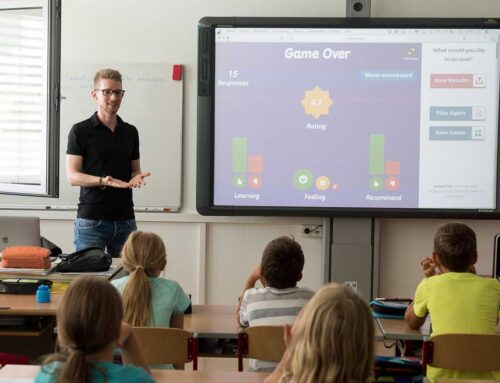Schools around the world are embracing digital transformation, and with it comes an important question: how do digital technologies impact the environment? While many worry about energy use and electronic waste, the right approach to EdTech can actually help schools lower their ecological footprint and operate more sustainably.
One of the clearest benefits of digital adoption in education is the reduction in paper use. Transitioning from printed worksheets, handouts, and textbooks to digital resources can save thousands of sheets of paper per school each year. This not only reduces costs but also preserves forests and lowers waste.
Digital technologies also make information sharing and collaboration more sustainable. Instead of printing reports, schedules, and meeting notes, schools can store and share them online, ensuring accessibility without the environmental cost of paper production and printing.
Another key benefit lies in energy-efficient solutions. Modern devices and cloud platforms are increasingly optimized for lower energy consumption, and schools can pair technology adoption with greener infrastructure, such as smart lighting and efficient servers, to further reduce their carbon footprint.
At the same time, schools must be mindful of the environmental impact of electronic waste (e-waste). Devices have life cycles, and when not disposed of properly, they contribute to pollution. That’s why forward-looking schools create clear strategies for device recycling, refurbishment, or repurposing to extend technology’s lifespan.
Maxter Board helps schools choose technologies that align with long-term sustainability goals. From recommending software that reduces paper dependency to guiding schools toward vendors with strong green commitments, the focus is not only on digital adoption but also on ecological responsibility.
Technology also allows schools to teach sustainability through practice. Students can engage in projects that analyze the school’s digital and environmental footprint, fostering awareness of how daily choices — such as printing less or turning off unused devices — make a collective impact.
Moreover, online assessments and digital grading reduce the need for printed exams, while e-libraries cut down on textbook shipments and replacements. These small changes compound into significant environmental savings over time.
It’s also important to note that hybrid learning models can reduce the environmental costs associated with daily commuting. Fewer car trips to school mean lower emissions, demonstrating how digital options can create a greener footprint beyond the classroom walls.
In 2025 and beyond, schools should embrace responsible digital maturity — not just adopting technology, but doing so in ways that balance innovation, efficiency, and environmental care. The conversation about sustainability is no longer optional; it’s central to future-ready education.
By adopting digital-first strategies, schools can achieve two major goals simultaneously: better learning outcomes and a smaller ecological footprint. The more thoughtfully schools implement digital solutions, the more they contribute to global sustainability goals.
At Maxter Board, we believe that digital transformation and environmental responsibility go hand in hand. The schools that thrive tomorrow will be those that use technology not just to innovate, but also to protect the planet.
In the end, sustainable EdTech is about more than reducing costs or boosting efficiency — it’s about preparing students for a future where technology and environmental responsibility must coexist. Schools that embrace this mindset today will lead the way toward a greener, smarter, and more sustainable tomorrow.






